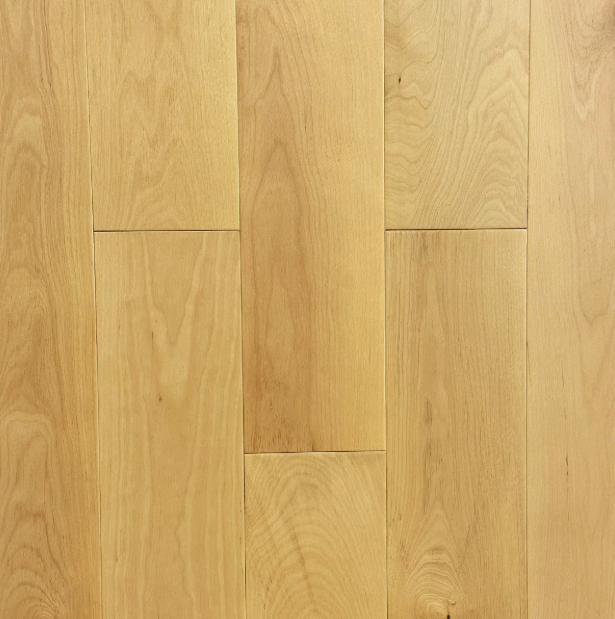Wood floors have long been admired for their natural beauty, durability, and versatility. Whether you’re renovating a vintage property or designing a modern home from scratch, wood flooring remains one of the most popular and desirable choices. Its warm, rich tones and unique textures can complement virtually any interior style—from rustic farmhouse to sleek minimalist.
In this article, we’ll explore the key advantages of planchers de bois wood floors, the different types available, popular wood species, design trends, and how to maintain them for years to come.
Why Choose Wood Floors?
1. Natural Elegance
There’s no mistaking the authenticity of real wood underfoot. Each plank is unique, with grain patterns and color variations that add character and depth to your living space. Unlike synthetic materials, wood offers warmth and a sense of comfort that’s hard to replicate.
2. Durability
When properly maintained, wood floors can last for decades. Hardwood flooring, in particular, is known for its strength and resilience. Many historical homes still feature original wood flooring that has stood the test of time.
3. Value Addition
Wood floors are a smart investment. Homes with hardwood flooring often sell faster and at higher prices than those with other floor types. Their timeless appeal means they rarely go out of style.
4. Improved Indoor Air Quality
Unlike carpet, which can trap allergens, dust, and pet dander, wood floors contribute to cleaner air. This makes them a preferred choice for households with allergies or respiratory sensitivities.
5. Versatility
From light oaks to deep walnuts, and wide planks to herringbone patterns, wood floors can be customized to suit any taste or décor. They’re equally at home in a cozy cottage or a luxury penthouse.
Types of Wood Flooring
There are several types of wood flooring to consider, each with its advantages:
1. Solid Hardwood
Made from a single piece of wood, solid hardwood flooring is known for its durability and ability to be sanded and refinished multiple times. It’s available in a wide range of wood species and finishes. However, it is sensitive to humidity and temperature changes, making it less suitable for basements or bathrooms.
2. Engineered Wood
Engineered wood flooring consists of a top layer of real wood attached to multiple layers of plywood or high-density fiberboard (HDF). This construction gives it superior stability, especially in areas with fluctuating moisture levels. It looks like solid hardwood but is often more affordable and easier to install.
3. Reclaimed Wood
Sourced from old barns, factories, or warehouses, reclaimed wood is a sustainable and eco-friendly option. It offers a rustic, weathered look and often features unique characteristics that can’t be replicated with new lumber.
4. Laminate (Wood-Look) Flooring
While not technically wood, laminate flooring mimics the appearance of hardwood through high-resolution imaging and a clear protective layer. It’s highly resistant to scratches and stains and is an economical alternative for high-traffic areas.
Popular Wood Species
Choosing the right wood species affects not only the color and grain but also the durability of your flooring. Some popular options include:
- Oak: A classic favorite, known for its strength and attractive grain. Available in red and white varieties.
- Maple: Light-colored with a smooth, uniform appearance, maple is great for modern spaces.
- Hickory: Extremely durable with a bold grain pattern, perfect for rustic or country-style homes.
- Walnut: Offers rich, dark tones and a luxurious look—ideal for formal or elegant settings.
- Bamboo: Technically a grass, but often grouped with wood flooring. It’s sustainable and very hard-wearing.
Design Options and Trends
Planchers de bois can be customized to match your design vision:
- Wide Planks: Create a sense of space and modernity.
- Distressed or Hand-Scraped Finishes: Add texture and a vintage, lived-in feel.
- Herringbone or Chevron Patterns: Bring visual interest and sophistication to any room.
- Natural Finishes: Show off the wood’s grain while enhancing its organic beauty.
- Stains and Color Treatments: Ranging from grey-washed tones to rich espresso hues, stains can dramatically change the feel of your space.
Maintenance Tips
To keep your wood floors looking their best:
- Sweep or vacuum regularly to remove dirt and grit that can scratch the surface.
- Use a damp mop with a wood-safe cleaner—avoid soaking the floor with water.
- Protect furniture from damage by using felt pads under chair and table legs.
- Control humidity levels in your home (ideally between 35% and 55%) to prevent wood from expanding or contracting.
- Recoat or refinish as needed to restore the shine and repair surface damage.
Conclusion
Wood floors are more than just a flooring choice—they’re an investment in beauty, comfort, and long-term value. With countless options in species, finishes, and styles, wood flooring offers something for every space and design aesthetic. Whether you prefer the warmth of oak, the modern appeal of maple, or the richness of walnut, a well-chosen wood floor will enhance your home for generations.
If you’re planning your next flooring project, consider wood floors not only for their timeless style but also for the comfort and quality they bring to everyday living.

